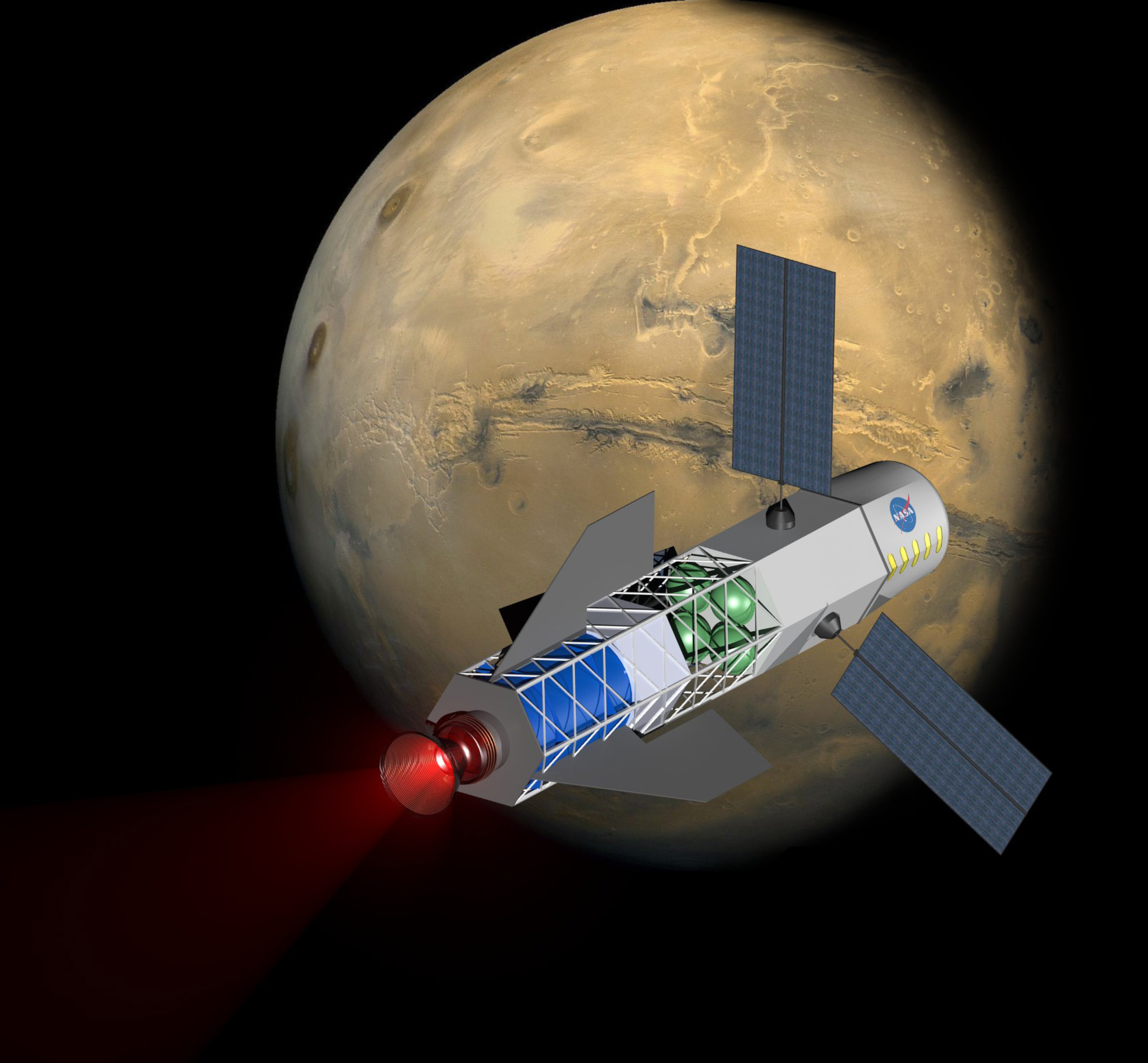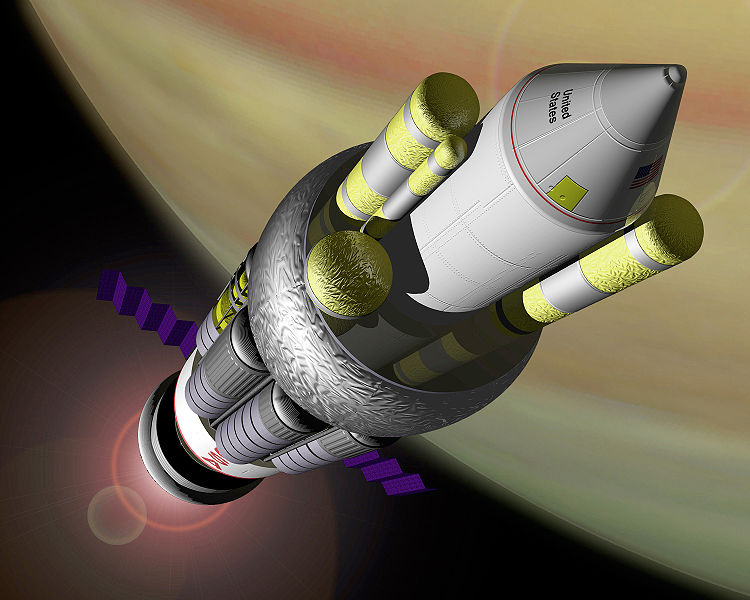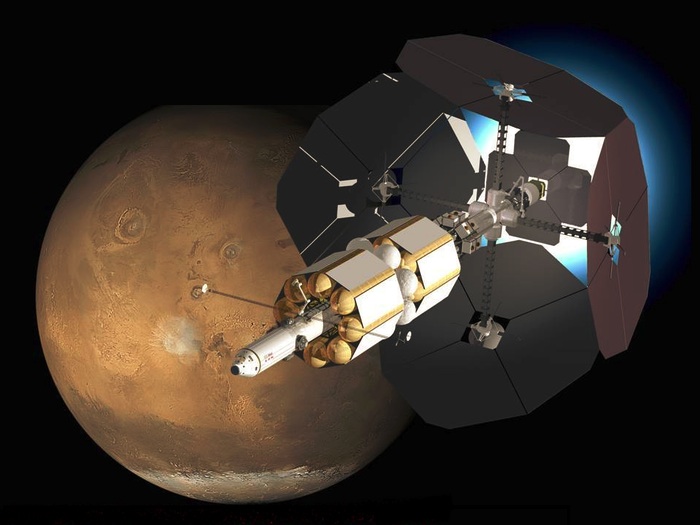
Incredible Technology: How to Launch Superfast Trips to Mars

Editor's Note: In this weekly series, SPACE.com explores how technology drives space exploration and discovery.
New propulsion technologies may blast astronauts through space at breakneck speeds in the coming decades, making manned Mars missions much faster and safer.
Souped-up electric propulsion systems and rockets driven by nuclear fusion or fission could end up shortening travel times to the Red Planet dramatically, proponents say, potentially opening up a new era in manned space exploration.
"Using existing rocket fuels, it's nearly impossible for humans to explore much beyond Earth," John Slough of the University of Washington, leader of a team developing a fusion-driven rocket, said in a statement earlier this year. "We are hoping to give us a much more powerful source of energy in space that could eventually lead to making interplanetary travel commonplace." [Superfast Propulsion Concepts (Images)]
Putting boots on the Red Planet is a chief ambition of NASA, which aims to send astronauts to the vicinity of Mars by the mid-2030s.
As it works toward this goal, the space agency is investigating and encouraging the development of advanced propulsion systems to take the reins from traditional chemical rockets, which could get astronauts to Mars and back in about 500 days.
That's too slow for NASA's liking. People living in deep space for that amount of time could accumulate relatively high radiation doses, officials say, and they'd have to exercise a great deal to stave off bone loss, muscle atrophy and other hazards of long-term microgravity exposure.
Breaking space news, the latest updates on rocket launches, skywatching events and more!
One possible solution is the nuclear fusion rocket being developed by Slough and his team, with funding from the NASA Innovative Advanced Concepts program, or NIAC. [Giant Leaps: Top Milestones of Human Spaceflight]
Such a system could get astronauts to the Red Planet in just 90 days or so, the researchers say. In fact, they're designing their work around a reference mission that lasts a total of 210 days — 83 days for the flight out, 30 days on the Red Planet's surface and a 97-day journey back to Earth.
Harnessing the power of nuclear fusion— the same process that fuels the sun and gives hydrogen bombs their enormous destructive potential — would make such speedy trips possible, team members say.
In their engine, bubbles of plasma — made from deuterium and tritium, "heavy" isotopes of hydrogen — would be injected into a chamber, where a magnetic field would collapse metal rings around them. This would briefly compress the bubbles into a fusion state, releasing energy that would vaporize and ionize the metal. The metal would then be accelerated out the back of the spacecraft through a nozzle, creating thrust.
A lot of work will be required to bring this concept to reality, but there's no reason to think that it won't work, the researchers say.
"This is probably the most simple and straightforward, lowest-cost fusion propulsion system you can think of," team member Anthony Pancotti, of the space-propulsion company MSNW, said in September during a presentation with NASA's Future In-Space Operations working group.
"The fundamental physics have been proven in the laboratory with hardware, and fusion yields — neutrons — have been produced," he added. "So what I'm talking about is building a device with known physics and with a proven method."
Nuclear fission, too
Another advanced propulsion concept would split atoms rather than fuse them together.
At its core, a nuclear thermal rocket (NTR) would work much like a nuclear power plant does, employing fissile material to generate large amounts of heat. A lightweight propellant — perhaps liquid hydrogen — would flow around this core and, once superheated, be expelled through a nozzle, producing large amounts of thrust.
The NTR idea is not a new one. Serious work on the concept began in the 1950s, and a joint NASA/U.S. Atomic Energy Commission program called Nuclear Engine for Rocket Vehicle Application, or NERVA, succeeded in developing and testing (here on Earth) multiple nuclear thermal rocket engines.
NASA wanted NERVA to power a manned Mars mission in 1979, but it never happened. The program was canceled in 1972, partially because Congress deemed the Red Planet effort too expensive and likely to escalate the space race between the U.S. and the Soviet Union.
Still, NASA hasn't given up hope on the technology. For example, Chris Moore, deputy director of advanced exploration systems at NASA Headquarters, said that nuclear thermal rockets could potentially cut a Mars' mission's roundtrip travel time to 180 days.
"It's a long-range technology-development activity, and it will probably be many years before that is ready," Moore told reporters this past May. "But it is part of our mission architecture for sending humans to Mars, is to use nuclear [thermal] rockets."
Nuclear electric thrusters
Nuclear power could also play a role in another propulsion system currently in development, a thruster called the Variable Specific Impulse Magnetoplasma Rocket, or VASIMR.
VASIMR, which is being developed by Texas-based Ad Astra Rocket Company, uses electromagnetic radiation to heat up and ionize gas such as argon, xenon or hydrogen. A magnetic nozzle directs the resulting superheated plasma out the back, creating thrust.
The concept is roughly similar to other plasma propulsion systems, such as the ion engines that power NASA's asteroid-exploring Dawn spacecraft, but VASIMR is capable of much greater thrust, Ad Astra officials say.
Solar panels could provide the electricity VASIMR needs for most near-Earth missions, but a quick manned Mars trip would require an onboard nuclear reactor.
"If you want to go to Mars and you want to do it fast, and you want to take a habitat that's large enough for people to survive in, you'd have to do nuclear electric," said Mark Carter, senior vice president of technology development at Ad Astra.
Powered by a nuclear reactor capable of generating 10 to 15 megawatts, VASIMR could get astronauts to Mars and back in one year, with some time set aside for exploring the Red Planet, Carter added. And the reactor could come in handy on the surface as well.
"If you have a nuclear-electric system that works for flight, then you could definitely put this on the ground — on the surface of Mars, the surface of the moon, wherever you wanted to go — to have power there reliably," Carter told SPACE.com.
Ad Astra has tested variants of VASIMR extensively on the ground and hopes to fire up its first flight unit on the International Space Station in 2016.
Follow Mike Wall on Twitter @michaeldwall and Google+. Follow us @Spacedotcom, Facebook or Google+. Originally published on SPACE.com.
Join our Space Forums to keep talking space on the latest missions, night sky and more! And if you have a news tip, correction or comment, let us know at: community@space.com.

Michael Wall is a Senior Space Writer with Space.com and joined the team in 2010. He primarily covers exoplanets, spaceflight and military space, but has been known to dabble in the space art beat. His book about the search for alien life, "Out There," was published on Nov. 13, 2018. Before becoming a science writer, Michael worked as a herpetologist and wildlife biologist. He has a Ph.D. in evolutionary biology from the University of Sydney, Australia, a bachelor's degree from the University of Arizona, and a graduate certificate in science writing from the University of California, Santa Cruz. To find out what his latest project is, you can follow Michael on Twitter.



